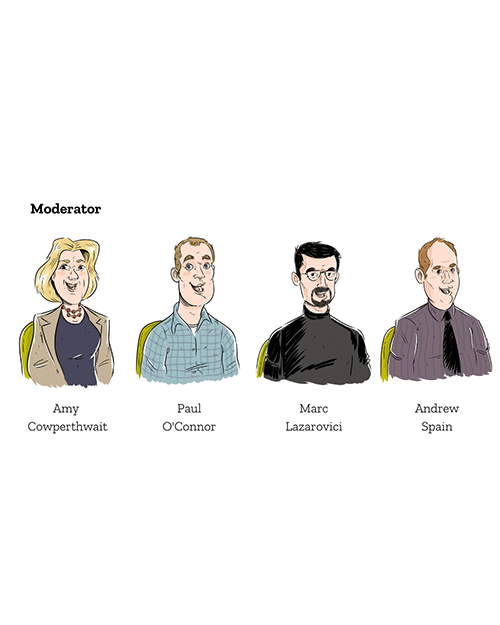Accreditation and certification are both indicators of excellence but they cost effort and time. International experts, moderated by Amy Cowperthwait, shared some thoughts in a session of the SSH Healthcare Simulation Week 2022. And SIMZINE reports the essentials
The debate
Accreditation refers to an external peer-reviewed evaluation of a healthcare simulation program and aims to ensure that the program adheres to the highest administrative, educational, research and ethical standard by providing quality healthcare education. Additionally, accreditation ensures that a program has a clear mission, vision, strategic plan, and formalized policies and procedures. Certification is a credential achieved by an individual that attests to their competence in a specific subject.
The importance of a facilitator’s certification and program’s accreditation is that, in some way, they set common and verified standards. Nevertheless, many individuals argue that working towards certain elements of the standards may have a negative impact on their staffing, resources, and finances. On the other hand, others believe that introduction of sort of standards through accreditation and certification may provide leverage regarding funding, and more adequate and appropriate resourcing.
Although there is no doubt that quality needs standards, evidencing achievement and progressing to recognition for that through certification and accreditation still requires additional commitment. International experts shared some thoughts in a webinar of the SSH Healthcare Simulation Week 2022.
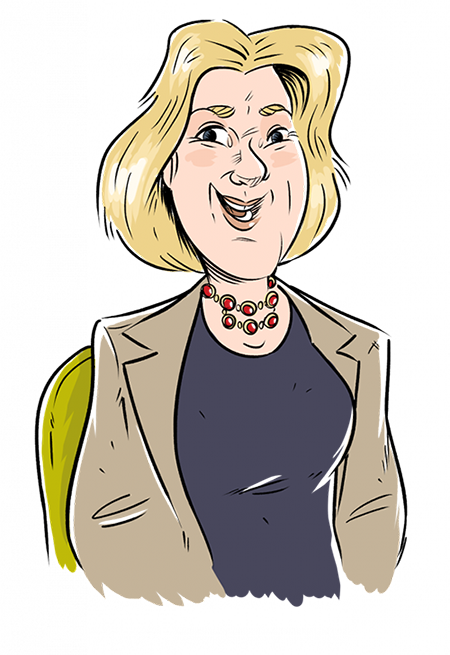
Moderator: Amy Cowperthwait
In the simulation education field since 2006, she started first at the University of Delaware, USA, and now she is doing the position of CEO of Avkin, a simulation education company. She is the chair of the Healthcare Simulation Week Committee of Society for Simulation in Healthcare.
Andrew Spain
Received a B.A. in Political Science from the University of Northern Colorado in 1990; became an EMT in 1991, and then a Paramedic. Previously Director of Certification for the Society for Simulation in Healthcare (SSH), he is now its Associate Executive Director.
Paul O’Connor
Senior lecturer and associate professor in Primary Care, Human Factor psychologist, research director at the Irish Centre for Applied Patient Safety and Simulation and co-director of the Diploma and Master in Patient Safety and Simulation at the National University of Ireland Galway. Chair of the Irish Association for Simulation, he is also a member of the Executive Committee for the Association for Simulated Practice in Health Care (ASPiH).
Marc Lazarovici
Internal medicine doctor, human factors trainer and computer scientist. Currently, leading the Human Simulation Center at the Institute for Emergency Medicine Medical Center of the Ludwig-Maximilians-Universität in München. Immediate Past-President of Society for Simulation in Europe (SESAM)
Which type of accreditation, certification, endorsement, or certificate does your association offer?
Marc Lazarovici: SESAM, as an overarching European society in the field of simulation-based education, has quite recently just started a quality assurance program which we call SESAM accreditation. Throughout Europe, centers, policies, and healthcare systems are extremely diverse. So it’s hard to find a program that fits everyone. Our members requested help to do this. So, we firstly did a need assessment, then a working group came together and defined what we, as a society, would call quality standards. And that was the result of the accreditation program, which is aimed at educational institutions. Therefore, it’s not aimed at educators as persons, it’s not aimed at programs as in courses or educational programs generally, it’s aimed at institutions. And I’m deliberately saying institutions and not centers, because an institution can be whatever can do simulation, just in situ and with no center at all. So that’s the diversity we try to cover in this program.
Paul O’Connor: ASPiH has been doing accreditation since 2019. We have three different kinds of levels or different types of accreditation. So you can be accredited as an individual who delivers simulation-based education, your organization can be accredited, or a particular program can also be accredited. And this accreditation lasts for three years. You have to commit to three years of membership of ASPiH. So you might be an individual who’s part of an organization that’s accredited, or in a program that’s accredited. Most of the ASPiH membership comes from the UK, but it’s not only specific to the UK. ASPiH is trying to become a bit more spread across Europe. I mean, I’m in the Republic of Ireland, for example, we have members who are not in the UK. Moreover, our accreditation doesn’t necessarily have a European focus. We have an organization in Hong Kong that was accredited recently for example.
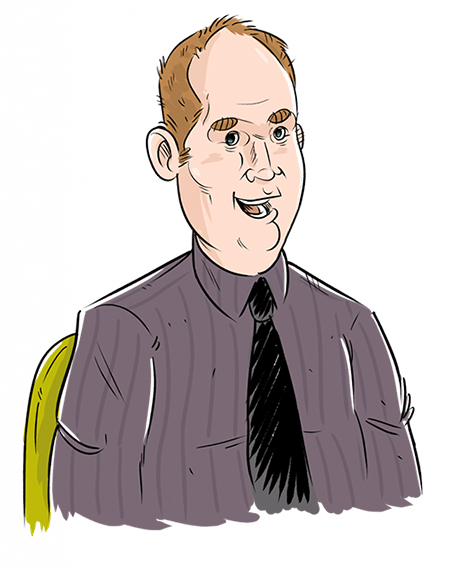
Andrew Spain: SSH accreditation and certification journey began back in 2007 and we focused primarily on accreditation. That is the organizational recognition of the quality of simulation activities. And of course, it’s not just the activities themselves, but all of the components within the organization to demonstrate the various pieces that need to be in place, be it staffing, infrastructure, organizational support, all those things that are necessary for the overall simulation program to be successful. We have a unique model compared to other accreditations that are out there. While everyone has to demonstrate compliance with the core standards, there are a number of areas that you then would apply for depending on your actual activities. And that’s our ARTE self model. So Assessment, Research, Teaching and Education, the systems integration pieces, which is specifically focused on patient safety and health care organization safety, and then the simulation fellows programs. Then for individuals, we have certifications. Since our first certifications were actually granted in 2012, this year at IMSH coming up we are celebrating 10 years of certifications. Our primary programs of course are two examination-based certifications, the CHSE and CHSOS, both accredited by the National Commission on Certifying Agencies.
Why did your association decide to move forward with your credentialing program(s)?
Paul O’Connor: We came up with the standards for simulation-based education. And the next logical step to put these standards in practice was to use them to support our members to either demonstrate their expertise, or help people to consider what they need to do in order to demonstrate their expertise. And of course, our members wanted this, because it’s a badge or it’s some demonstration that you have some idea of what you’re doing when it comes to simulation-based education.
Andrew Spain: A lot of our starting point came down to the decision by our Board of Directors to create the programs as a service to the healthcare simulation community. When we were developing the certification, our own surveys identified really interesting data, such as 86% of the respondents saying that they were learning on the job rather than actually measuring up to a known framework for what good performance looks like. And so that was really important for our board to say, look, there’s a lot of things that need to be done to help solve that problem. And accreditation and certification clearly are two very important pieces to it, not just to help set those standards, but frankly, to develop the profession as a whole and to be recognized as such.
Marc Lazarovici: I think I addressed this before. From our needs survey came out the reason why our members seek a quality assurance program: mainly they needed it in order to demonstrate, to their university, to their funding bodies, to whomever was asking, adherence to certain quality standards.
What, if any, unintended benefits has your association identified with their credentialing program?
Andrew Spain: Obviously we expected things like improvement and quality of simulation and so forth. But it’s been really fun to see what feedback we receive from our programmatic and individual applicants and just to hear their stories. I think that pretty much every program, without exception, talks about how important the self-assessment and accreditation process has been because it is quite comprehensive. It covers so many different areas of performance. From the individual perspective, we get a lot of different stories. Suddenly our operations specialists have a credential and now they’re perceived as having the knowledge and expertise and have a level playing field at the table and talking about simulation, where previously they didn’t have that type of skills. And sometimes that has actually led to a reclassification of the job and actually an improvement in salaries, which is just absolutely amazing. Not something that is a goal of the program, but to see those kinds of outcomes is really good, obviously.
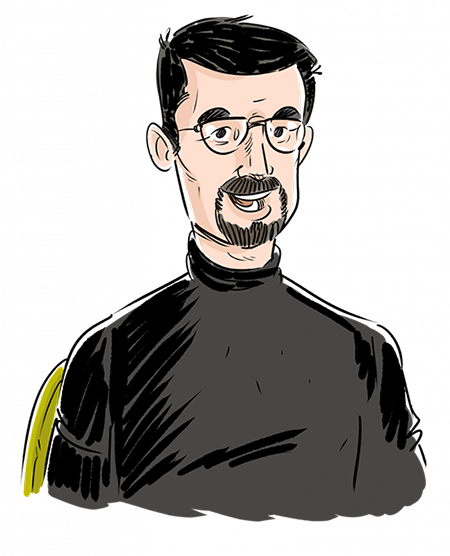
Marc Lazarovici: There were mainly two unintended consequences. First: we got feedback that by going through the accreditation process, centers or institutions were able to identify a lot of points that they immediately addressed and improved upon, without waiting for our feedback. And secondly, we got a lot of interest also from outside of what we would, let’s say, traditionally call Europe and where we expected our members to be. And this posed a lot of new challenges, because when we designed the process we didn’t think of traveling to, I don’t know, to Mexico or anywhere else, and all of a sudden it was necessary. That was also an unintended consequence and we’re still dealing with that one.
Paul O’Connor: We actually ask the organization if there’s anything they would like us to put in our reports for them to share with their higher ups, or if there’s something they’re looking for, like more money or more equipment, so we can go through the accreditation process and we can put some stuff in there that maybe helps them do what they want to do, or get where they want to go. As another unintended consequence, we keep trying to apply these standards. It’s led us to identify where we need to change our standards, actually, because when we try and apply them, maybe sometimes that is not easy. So we are just about to start a whole process of updating our standards.
If you could deliver a message to every simulationist about your credentialing program, what would it be?
Paul O’Connor: It is a bit of work. I won’t lie. I mean, I’ve been on both sides of it: I’ve been accredited, my organization is being accredited and I’ve been an assessor. So it’s not pleasant work. There’s lots of work that goes in ahead of time to get yourself ready. But I think it is definitely worth it. It shows a kind of professionalism. It can give some confidence that you know what you’re doing. I guess, when you go to talk to other people, if you’re accredited, they have some confidence in what you’re doing. And yeah, it’s definitely useful when you’re seeking money, seeking promotion, wanting more to demonstrate that you know what you’re doing.
Andrew Spain: I would like to say to everyone who’s reading that you really should get accredited and get certified, because these are such important pieces of the puzzle to not only grow healthcare simulation as a whole, but to grow yourself as an individual, to grow your organization. Yes, it’s hard work, but it’s absolutely worth it.
Marc Lazarovici: I would first and foremost say, be prepared for it in terms of taking your time and being aware. It will take a toll on your time to go through it and read the documents and after reading, decide whether it’s for you or not. But in the end, be sure that showing that certificate to your superiors, to your university, to your funding bodies will make up for it. It will be worth it.
In your opinion, how does credentialing help a greater community beyond healthcare simulation?
Marc Lazarovici: I believe in a world and a system like healthcare, where more and more attention is paid to the quality of the provided services, be it healthcare or education, it is important we provide good education, and I do believe that providing education according to standards set by a body of professionals is good education. If we are doing this on a broader scale, then we will end up with better professionals, and better professionals will definitely help the community and the system at large.
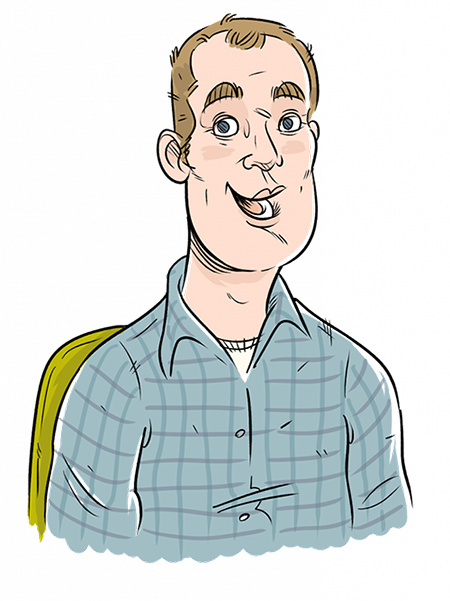
Paul O’Connor: When we’re delivering simulation-based education, we’re pulling healthcare workers off their day job. They’re not looking after patients. So we need to ensure that when they come to us, the training they’re being given is the best possible, because of the costs, the time that are required to do this. And so I think that credentialing ensures that we are delivering training, and the people know what they’re doing.
Andrew Spain: When we look at our credentials, accreditations and certifications, we recognize that everything that we are building through our standards, through our processes, whatever it may be for each of those recognitions, it’s all about ultimately the patient-centered focus, because anybody who goes through healthcare simulation is going to end up in some way affecting patients in the future. And if our simulations aren’t done well, that carries on through to the patients and of course, it can increase the risk of poor outcomes.
Many regulatory bodies for the health professions, such as medical schools or nursing programs or hospitals, still recognize simulation as a new or novel educational modality. In your opinion, how does our collective credentialing work speak to its efficacy?
Marc Lazarovici: I’m always a bit surprised by calling simulation a novel teaching method. Well, it’s not. We all know it has very deep roots and you don’t need to look into ancient history. But we’ve been doing it. All the time. By the way, I believe that creating standards or levels of quality will lead to the whole field being recognized as truly professional.
Andrew Spain: I see that what we have done and what all of our organizations have done, it does create that consistency for simulation to be recognized by external bodies, because there are so many things that, of course, go into becoming accredited and certified. Now you’re demonstrating high-quality simulation. You see the growth of the programs over the years. I mean, we have 237 programs in 24 countries that are now accredited and almost 4000 individuals in 43 countries who are certified. You’re going to see that it’s going to be recognized. All this has been an effort to improve healthcare simulation as a profession, as an industry, and just to grow us all where we’re now.
Paul O’Connor: I think credentialing gives us some kind of professionalism. It shows that we’re not just cranks in the corner of a hospital doing weird things with dolls. We are doing this properly, it’s based in theory. There’s demonstrated evidence for the effectiveness of what we’re doing. We’re now participating in quality improvement after action reviews. There is so much that we can do to help improve patient safety and the delivery of care. Simulation is not a nice-to-have anymore. It’s become something we must do and we must do more of it. And I think with the accreditation is starting to build a proper professional kind of support network around that.
Conclusion
Accreditation and certification are both indicators of excellence and a mechanism for advocacy. Standards provide benchmarks for the institutions’ and individuals’ performance and help ensure that learners have access to high-quality simulation training resources and expertise. Credentialing gives the simulation community and industry some kind of professionalism. It’s hard work, but it’s absolutely worth it.
WATCH THE COMPLETE #HCSW22 SESSION: https://www.youtube.com/watch?v=WJaHfeX0_Pw



